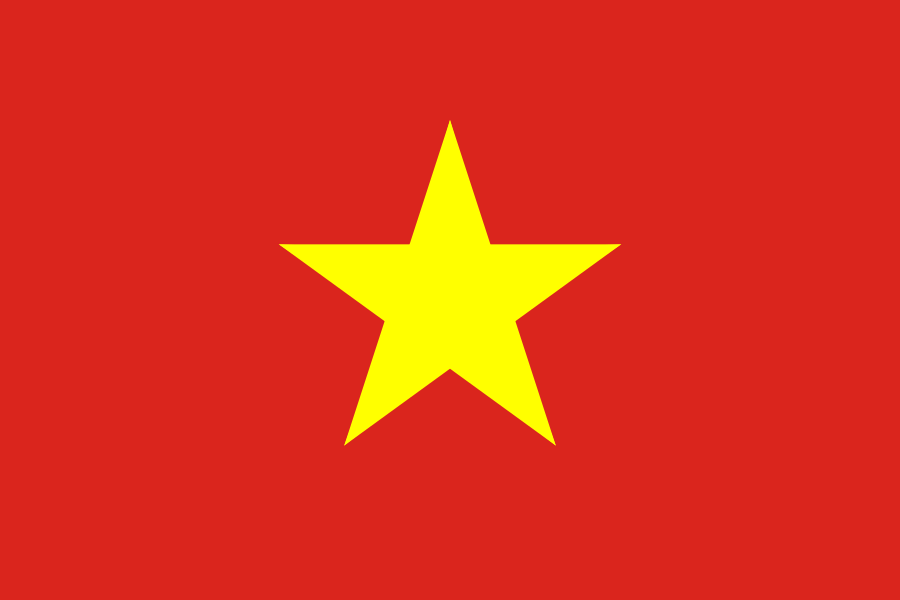Historical Context:
The flag of Vietnam is deeply intertwined with the nation's quest for independence and its evolution from colonial subjugation to a united sovereign entity. Its formal adoption occurred during a critical juncture in Vietnamese history, marking the shift from a French colony to the assertion of full sovereignty.
Design Specifications:
Colors:
- Red: Known as "cờ đỏ" in Vietnamese, translating to "red flag," the flag's red hue is a poignant representation of the sacrifices, resilience, and tenacity of the Vietnamese populace across their historical trajectory. It serves as a testament to their fortitude during periods of strife and confrontation with foreign dominion, encapsulating the revolutionary fervor and unwavering determination of the nation.
- Yellow: The luminous yellow shade of the star is referred to as "sao vàng" in Vietnamese, denoting a "yellow star." This star embodies themes of unity, resoluteness, and optimism for a future brimming with prosperity. It mirrors the collective hopes of the Vietnamese people for a more promising and radiant destiny.
- The prominent, five-pointed star occupies the upper-left corner of the flag, adjacent to the hoist. Its strategic positioning accentuates its significance and symbolism.
- The star's five points symbolize distinct facets of Vietnamese society harmoniously uniting in their pursuit of national autonomy and advancement: laborers, farmers, intellectuals, soldiers, and traders. This configuration reflects the ethos of an inclusive, broad-based revolution.
Symbolism and Cultural Significance:
- Independence and Unity: The flag's design and chromatic palette encapsulate the ideals of Vietnamese nationalism, self-reliance, and solidarity. It serves as a commanding emblem of the populace's unwavering resistance against colonial rule and external influence.
- Spirit of Revolution: The vivid red shade embodies the essence of revolutionary zeal that has characterized Vietnam's narrative, spanning from its endeavors against colonial dominions to its resolute struggle for unification during the era of the Vietnam War.
- Hope and Perseverance: The radiant yellow star epitomizes hope, perseverance, and the enduring spirit of the Vietnamese populace. It signifies the country's aspirations for advancement and prosperity, even amid formidable adversities.
- Reunification: The formal adoption of the flag as the official insignia of the Socialist Republic of Vietnam in 1976 marked the culmination of the Vietnam War and the nation's reunification. This momentous event signifies the closure of decades of conflict and disunity, epitomizing the path towards concord and rejuvenation.
Usage and Protocol:
- Display: The flag assumes a prominent presence across diverse settings, including governmental edifices, educational institutions, public arenas, and during national commemorations and festivities.
- Respect and Etiquette: The Vietnamese flag commands the utmost reverence, with specific protocols governing its display, manipulation, and folding. It is essential to refrain from actions that may demean or dishonor the flag's sanctity.
Evolution and Variations:
While the flag's essential design has largely remained consistent, subtle variations have emerged over time, primarily pertaining to the shade of red employed. Distinct iterations of the flag have been employed by various Vietnamese administrations across history, mirroring shifts within the country's political landscape.
In summation, the flag of Vietnam serves as a potent emblem of the nation's narrative, struggle, and durability. Its design and allegorical implications encapsulate the collective yearnings of the Vietnamese populace for self-determination, solidarity, and a brighter tomorrow. The flag serves as a poignant testament to Vietnam's odyssey from colonial oppression to a harmonized and autonomous nation.
Last Updated on: August 07, 2023